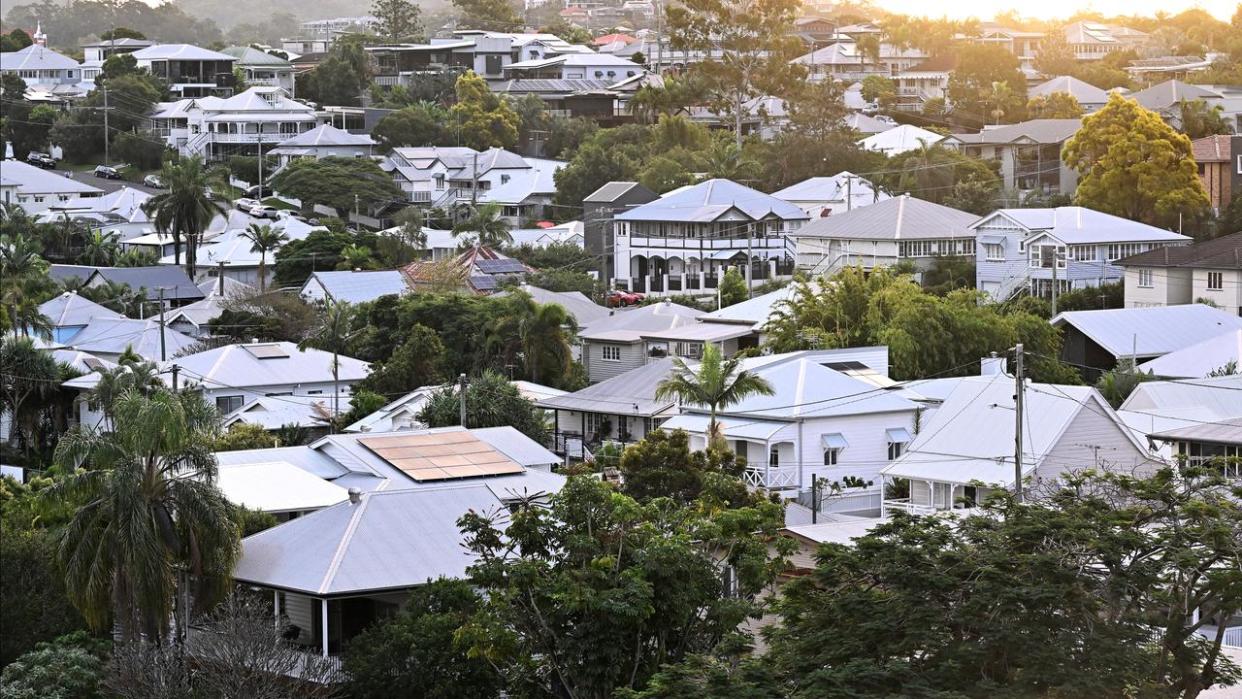Brisvegas is second most expensive after Emerald City

Australia's real estate values have undergone a reshuffle with Brisbane now the second most expensive city to buy a house.
The Queensland capital, nicknamed Brisvegas, has leapfrogged Canberra to sit behind Sydney for the first time since 1997.
It follows sustained growth that allowed Brisbane to overtake median Melbourne house prices in January, marking the first time it had eclipsed the Victorian capital since June 2008.
Brisbane's median house value is currently $937,479; $190 more than Melbourne.
Units in Brisbane are $615,429, compared to Melbourne's $614,299.
Overall, the value of Brisbane dwellings has increased more than five times faster than Melbourne since the pandemic began, at 59.8 per cent compared to 11.2 per cent respectively.
Brisbane also significantly outpaced growth in Canberra where dwelling values are up 31.8 per cent since March 2020.
Value has increased across mid-size capital cities since the pandemic due to overseas and intrastate migration, according to property data group CoreLogic.
A lack of supply has also been a factor.
"One of the biggest aligning factors with these stronger capital growth trends is a real deficit of available listings," CoreLogic research head Eliza Owen told AAP.
"Population moves quickly, housing supply doesn't.
"The shock of that population increase is something that developers and councils really haven't been able to keep up with and that's what's creating so much urgency and price pressure across the Brisbane market."
Price increases are not surprising given Queensland's migration spike, human geography expert Dr Elin Charles Edwards said.
"Our population growth is faster than anywhere else in the country," University of Queensland's Dr Edwards told AAP.
"There's a lot of demand out there and not enough supply."
Dr Edwards believed there were many reasons why people had flocked to Queensland since the pandemic.
"We certainly saw during that COVID period ... very high levels of internal migration...and the (house) price differential would have been a part of that," she said.
"There's also obviously other lifestyle considerations, maybe people returning to be close to friends and family, but ...they've declined, and the net gains have declined.
"What we're seeing now driving the growth is international migration."
The Queensland government is trying to find a remedy, announcing the construction of up to 600 modular homes.
It has locked in a further $2.8 billion in the 2024-25 budget toward a plan to build one million homes by 2046.
Queensland Premier Steven Miles said the modular homes would be built in partnership with the private sector and underway by the end of 2024.
"Factory-built homes allow us to deliver more homes faster," he said.
Despite renewed and record investment in housing, Queenslanders reportedly remain at the "brutal edge" of Australia's housing constraints.
A Queensland Council for Social Services report on Monday showed rents in the state were rising faster than anywhere in Australia.
The report estimated about 150,000 households in Queensland are still unable to access affordable housing with vulnerable families stuck in crisis motel rooms.
It also found that only 10 per cent of private rentals were affordable for low-income households.
While the council acknowledged the Queensland housing plan would generate significant downward pressure on supply in the coming years, renters would continue to feel the brunt.
"Despite a nation-leading housing plan announced by the Miles government in February, renters across Queensland have been overlooked and many are on the brink of homelessness," council CEO Aimee McVeigh said.
"To make a real difference for renters, both the Queensland government and state opposition need to commit to putting a cap on the cost of renting and end unfair evictions."
INDEX RESULTS AS OF MAY 31: MEDIAN DWELLING (HOUSES, UNITS) VALUE
1. Sydney $1,156,020 (7.4 per cent annual increase)
2. Brisbane $843,231 (16.3 per cent annual increase)
3. Canberra $840,100 (2 per cent annual increase)
4. Melbourne $780,437(1.8 per cent annual increase)
5. Adelaide $757,448 (14.4 per cent annual increase)
6. Perth $736,649 (22 per cent annual increase)
7. Hobart $655,170 (-0.1 per cent annual increase)
8. Darwin $502,120 (3.5 per cent annual increase)


